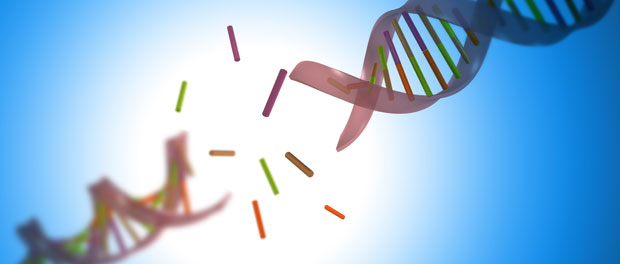
DNA damage occurs frequently to cells as a result of normal cellular processes, but one of the worst genetic malfunctions that can occur is DNA double-strand breaks, or DSBs. This can lead to cancer and increased resistance to cancer therapy. New research from scientists at The University of Texas MD Anderson Cancer Center reported their findings regarding histone modifications, the cause of DNA double-strand breaks, and possible ways they can be fixed. Their research was published in Nature Cell Biology.
Zhimin Lu, M.D., Ph.D., professor of Neuro-Oncology said, “Our study showed that the enzymatic activity of the metabolic enzyme fumarase and its product, fumarate, are critical elements of the DNA damage response and that fumarase deficiency promotes tumor growth due to impairment of DNA repair.”
The research team showed that fumarase is critical for carrying out proper DNA repair and does this via a histone modification called histone methylation. Histone modifications are important epigenetic mechanisms that occur to histone proteins which can affect gene regulation and gene expression. Numerous cancers are believed to occur as a result of faulty histone methylation.
An additional factor crucial to proper DNA repair is a protein kinase known as DNA-PK. This molecule governs the response to DNA damage and assists in maintaining genetic stability. Lu and his research team described the interaction between fumarase and DNA-PK and how they act together to increase histone methylation which allows for proper repair of damaged DNA and restoring cells to their healthy state.
Lu says histone methylation has been known to regulate DNA repair, however, the mechanisms behind this repair are not fully understood. Their research uncovered a “feedback” mechanism underlying DNA-PK regulation by chromatin-associated fumarase and expanded researchers’ understanding about fumarase’s involvement in the regulation of DNA repair via histone methylation.
This repair process described in the study is dependent on a chain of events which occur at the DNA double-strand break areas and fix the DNA damage by joining the broken tail ends together. To demonstrate, the researchers stimulated DNA-PK-dependent phosphorylation of nuclear fumarase at Thr 236 using ionizing radiation, which caused an interaction between fumarase and the histone variant H2A.Z. Fumarate, generated locally, inhibits histone demethylase activity, specifically KDM2B, leading to increased dimethylation of histone H3K36. This, in turn, promotes the accumulation of Ku70, a protein required for the non-homologous end-joining pathway of DNA repair.
Inhibition of fumarase and DNA-PKs has been connected to sensitizing cancers cells to radiotherapy or chemotherapy and further research is being conducted to obtain a more comprehensive understanding of this process which could advance new methods for treating cancer.
Previously, Dr. Lu and his research team found that pyruvate kinase M2 (PKM2), a metabolic enzyme, behaves as a protein kinase to regulate gene expression, cell cycle progression, and the Warburg effect, which explains the different way that cancer cells produce energy compared to normal cells.
“Our new findings on fumarase’s role in DNA repair further demonstrate that metabolic enzymes can possess non-metabolic functions in crucial cellular activities of cancer cells,” said Lu.
Source: Yuhui Jiang, Xu Qian, Jianfeng Shen, Yugang Wang, Xinjian Li, Rui Liu, Yan Xia, Qianming Chen, Guang Peng, Shiaw-Yih Lin, Zhimin Lu. (2015). Local generation of fumarate promotes DNA repair through inhibition of histone H3 demethylation. Nature Cell Biology, 17: 1158-1168.
Reference: The University of Texas MD Anderson Cancer Center. MD Anderson study reveals new insight into DNA Repair. MD Anderson Newsroom. Web.

